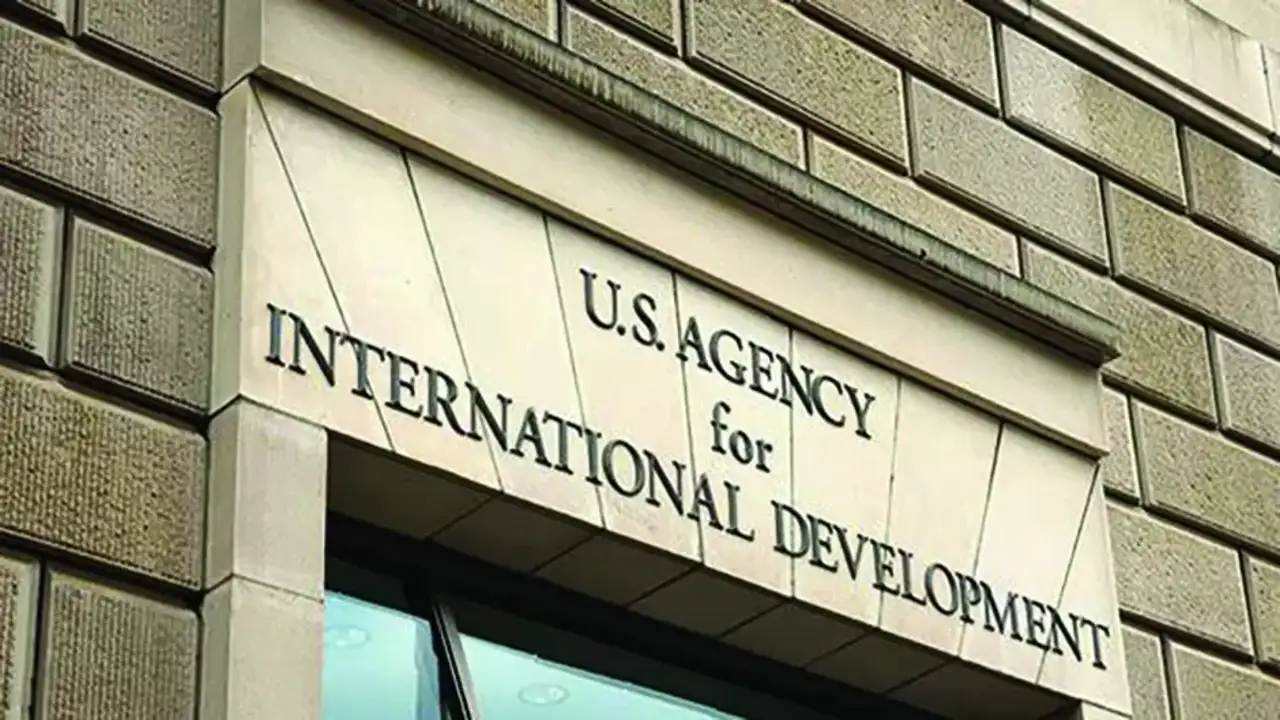[ad_1]

By Kim Harrisberg
Johannesburg: T arryn Lokotsch can see the U.S. aid money she desperately needs to help South African rape survivors sitting in her organisation’s bank account, but she cannot touch a cent of it.
Since U.S. President Donald Trump froze funds under the President’s Emergency Plan for AIDS Relief (PEPFAR) in January, even the donor-funded cars Lokotsch and her colleagues use to visit rape victims have sat idle.
CEO of the Greater Nelspruit Rape Intervention Project Group (GRIP), Lokotsch said she had to stop gender-based violence and HIV prevention programmes for 11,000 girls in the eastern Mpumalanga province as she tried to keep other services afloat.
“It’s like we just abandoned them,” she said.
“And it breaks my heart because it’s out of our hands, it’s something that we have no control over,” she told the Thomson Reuters Foundation.
GRIP’s PEPFAR funding is one of more than 5,000 USAID contracts terminated in March following a review prompted by Trump’s decision.
PEPFAR funding has saved more than 26 million lives in 55 countries since its creation in 2003, according to the United Nations AIDS agency (UNAIDS). It received a limited waiver during Trump’s funding freeze, but many organisations have since received termination notices.
UNAIDS estimates a permanent PEPFAR funding freeze could lead to an additional 6.3 million AIDS-related deaths by 2029.
Lokotsch is among more than 740,000 PEPFAR-funded workers now racing to plug the funding gap to provide vital HIV healthcare from Mpumalanga to Manila in the Philippines.
From working for free to fundraising, they are trying to patch together cash and manpower to keep programmes afloat.
“We are hoping for a lifeline,” said Lokotsch.
PUTTING OUT FUNDING FIRES
Lokotsch said GRIP supported about 150 rape survivors a month, providing a range of services including police case reporting, pre-court training, protection orders, safe shelters, trauma counselling and HIV treatment support programmes.
Fighting HIV goes hand-in-hand with fighting gender-based violence, said Lokotsch, in a country where around 115 women are raped every day and 8 million people are HIV positive out of a population of 63 million.
Lokotsch has dug into GRIP’s reserves, senior management and fieldwork teams have taken pay cuts, team meetings have gone online and group pre-court sessions previously held in the organisation’s offices are now one-on-one in court buildings.
But GRIP still had to lay off one fifth of its staff.
The Networking HIV and AIDS Community of Southern Africa (NACOSA), one of the country’s biggest HIV charities, said some laid-off staff, including youth workers, are working for free.
Lokotsch fills in new proposals for funding every week, but many donors want a five-year sustainability plan.
“A five-year plan? That is impossible right now,” she said.
In Nigeria, where 90% of HIV programmes are PEPFAR-funded, frontline organisations are trying to prioritise the most needy.
The Sustainable Programs for HIV Epidemic Control and Equitable Service Delivery (SPEED) project has had to refocus on prevention rather than treatment.
“There is no more funding for testing kits and, so that we don’t lose all the good work we’ve done, we’re talking to patients about prevention,” said Sarah Ajikobi, a nurse who works with SPEED.
In the Philippines, which is facing one of the world’s fastest-growing HIV epidemics, LGBTQ+ organisations have turned to local health institutions for funds, while brainstorming new ways of getting money, such as through benefit concerts.
In Europe, HIV programmes in Ukraine are also at risk.
PEPFAR contributed $15.6 million to the HIV response in Ukraine during 2023 and 2024, including $11 million for antiretroviral therapy and $2 million for rapid test kits, according to UNAIDS.
UNAIDS estimates 92,840 Ukrainians could see HIV treatment disrupted if U.S. funding is entirely cut – 78% of all people living with HIV in the country on treatment.
“It’s difficult to find a substitute because it’s quite a significant amount of funds,” said Andriy Klepikov, executive director of the Alliance for Public Health (Ukraine).
GOVERNMENT PARTNERSHIPS
HIV charities are also reaching out to governments.
Nigeria allocated $200 million to buy 150,000 HIV treatment kits in the next four months and the government will also absorb about 28,000 health workers, previously under USAID programmes, onto its payroll.
South Africa’s Department of Health said it had instructed provincial clinics and hospitals to accommodate new patients.
In the Philippines, the Department of Health said it was looking for new domestic funding for HIV/AIDS, malaria and tuberculosis programmes.
The Philippines government will also mobilise reimbursements by the national health insurance programme, PhilHealth, and has enhanced outpatient HIV/AIDS treatment coverage from 39,000 pesos ($680) to 58,500 pesos annually.
Sophie Hobbs, head of communications and advocacy at NACOSA, said there might be “an opportunity in this nightmare”.
She said a collective fund where governments and charities could pool their resources would build resilience to global shocks, protecting people in South Africa and across the world.
“Viruses don’t have feelings, they don’t discriminate. So, if HIV rates start to rise again in South Africa, people move and travel … it’s a global concern.” ($1 = 57.2770 Philippine pesos) (Reporting by Kim Harrisberg, Bukola Adebayo in Lagos, Mariejo Ramos in Manila; Additional reporting by Joanna Gill in Brussels; Editing by Jon Hemming. The Thomson Reuters Foundation is the charitable arm of Thomson Reuters. Visit https://www.context.news)
[ad_2]

